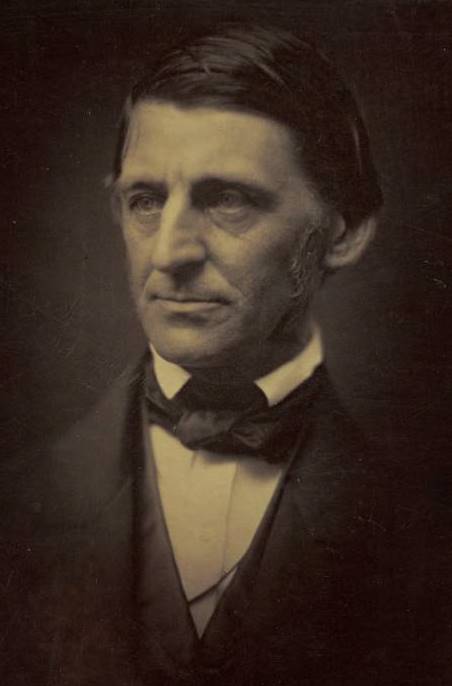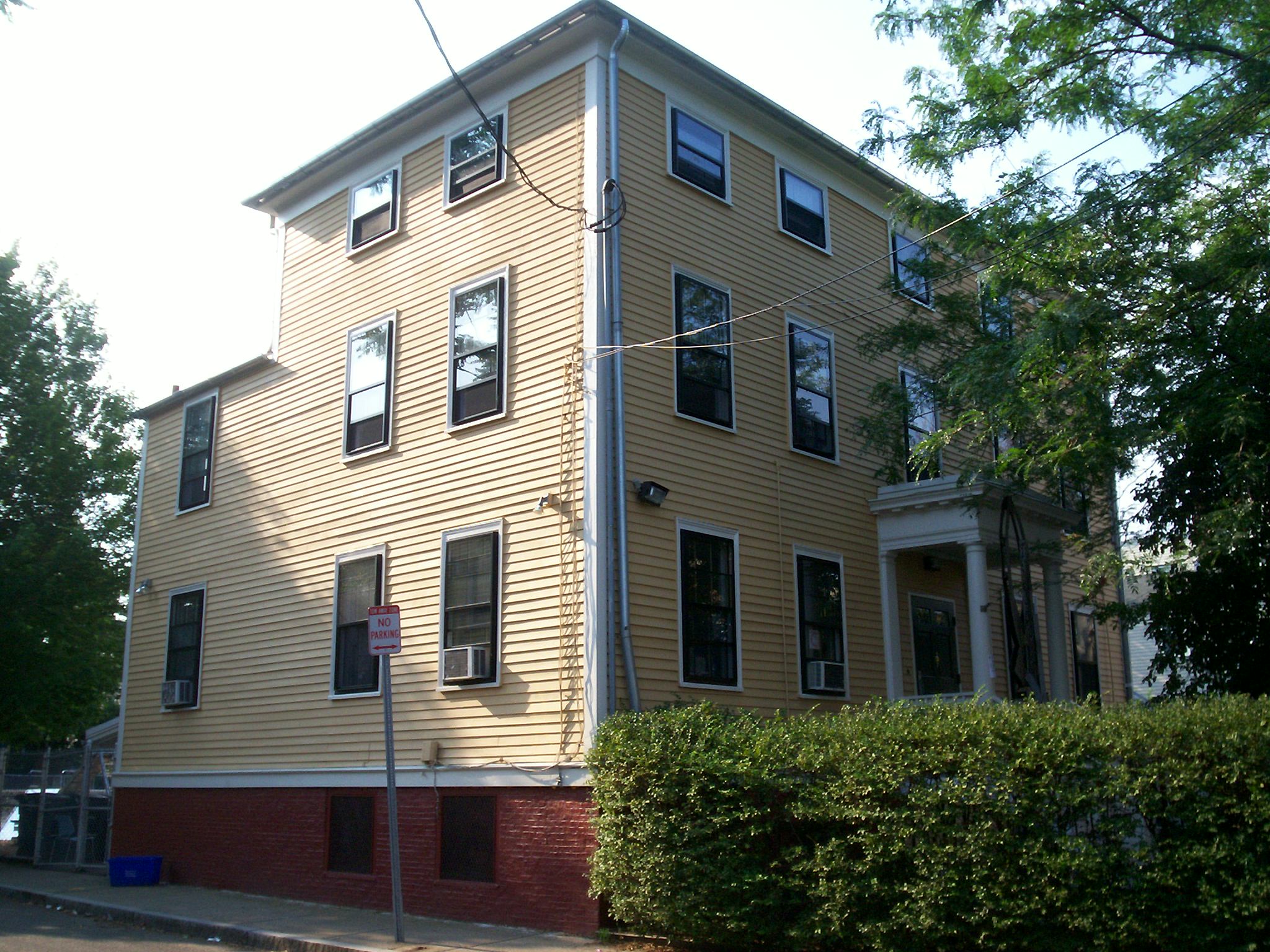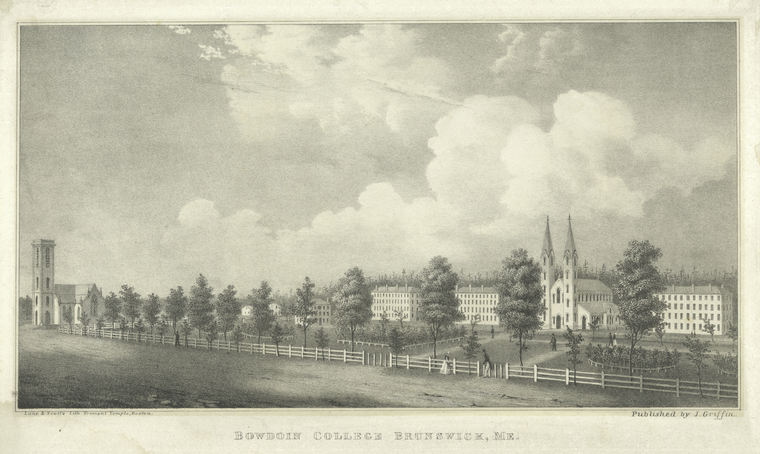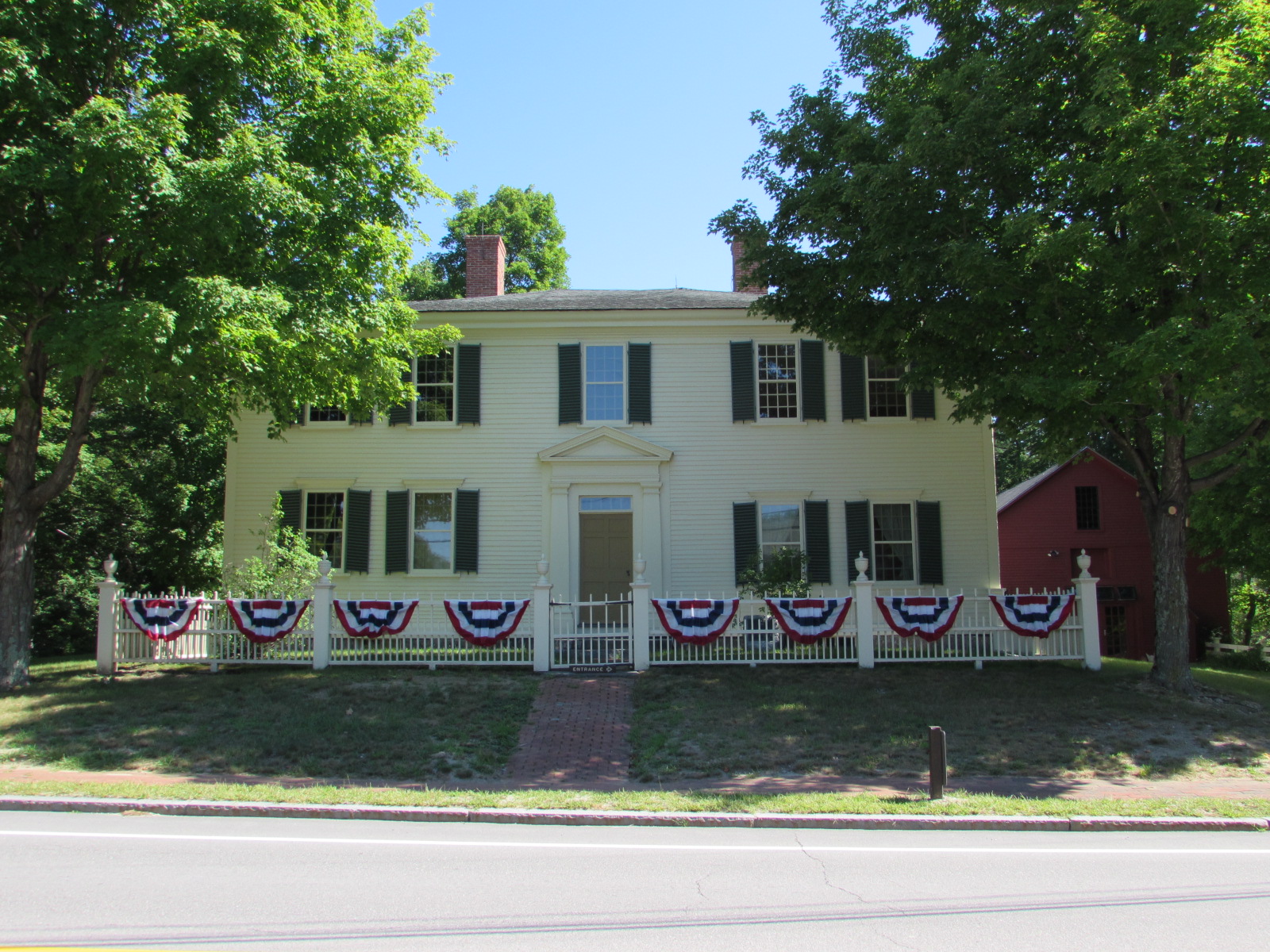|
The Old Manse
The Old Manse is a historic manse in Concord, Massachusetts, United States, notable for its literary associations. It is open to the public as a nonprofit museum owned and operated by the Trustees of Reservations. The house is located on Monument Street, with the Concord River just behind it. The property neighbors the North Bridge, a part of Minute Man National Historical Park. History Emerson years The Old Manse was built in 1770 for the Rev. William Emerson, father of minister William Emerson and grandfather of transcendentalist writer and lecturer Ralph Waldo Emerson. The elder Rev. Emerson was the town minister in Concord, chaplain to the Provincial Congress when it met at Concord in October 1774 and later a chaplain to the Continental Army. Emerson observed the fight at the North Bridge, a part of the Concord Fight, from his farm fields while his wife and children witnessed the fight from the upstairs windows of their house. Emerson died in October 1776 in West R ... [...More Info...] [...Related Items...] OR: [Wikipedia] [Google] [Baidu] |
Concord, Massachusetts
Concord () is a town in Middlesex County, Massachusetts, in the United States. At the 2020 census, the town population was 18,491. The United States Census Bureau considers Concord part of Greater Boston. The town center is near where the confluence of the Sudbury and Assabet rivers forms the Concord River. The area that became the town of Concord was originally known as Musketaquid, an Algonquian word for "grassy plain." Concord was established in 1635 by a group of English settlers; by 1775, the population had grown to 1,400. As dissension between colonists in North America and the British crown intensified, 700 troops were sent to confiscate militia ordnance stored at Concord on April 19, 1775.Chidsey, p. 6. This is the total size of Smith's force. The ensuing conflict, the battles of Lexington and Concord, were the incidents (including the shot heard round the world) that triggered the American Revolutionary War. A rich literary community developed in Concord during th ... [...More Info...] [...Related Items...] OR: [Wikipedia] [Google] [Baidu] |
Transcendentalism
Transcendentalism is a philosophical movement that developed in the late 1820s and 1830s in New England. "Transcendentalism is an American literary, political, and philosophical movement of the early nineteenth century, centered around Ralph Waldo Emerson." A core belief is in the inherent goodness of people and nature, and while society and its institutions have corrupted the purity of the individual, people are at their best when truly "self-reliant" and independent. Transcendentalists saw divine experience inherent in the everyday, rather than believing in a distant heaven. Transcendentalists saw physical and spiritual phenomena as part of dynamic processes rather than discrete entities. Transcendentalism is one of the first philosophical currents that emerged in the United States;Coviello, Peter. "Transcendentalism" ''The Oxford Encyclopedia of American Literature''. Oxford University Press, 2004. ''Oxford Reference Online''. Web. 23 Oct. 2011 it is therefore a key early poin ... [...More Info...] [...Related Items...] OR: [Wikipedia] [Google] [Baidu] |
Margaret Fuller
Sarah Margaret Fuller (May 23, 1810 – July 19, 1850), sometimes referred to as Margaret Fuller Ossoli, was an American journalist, editor, critic, translator, and women's rights advocate associated with the American transcendentalism movement. She was the first American female war correspondent and full-time book reviewer in journalism. Her ''book Woman in the Nineteenth Century'' is considered the first major feminist work in the United States. Born Sarah Margaret Fuller in Cambridge, Massachusetts, she was given a substantial early education by her father, Timothy Fuller, a lawyer who died in 1835 due to cholera. She later had more formal schooling and became a teacher before, in 1839, she began overseeing her Conversations series: classes for women meant to compensate for their lack of access to higher education. She became the first editor of the transcendentalist journal ''The Dial'' in 1840, which was the year her writing career started to succeed, before joining th ... [...More Info...] [...Related Items...] OR: [Wikipedia] [Google] [Baidu] |
Horatio Bridge
Horatio Bridge (April 8, 1806 – March 18, 1893) was an officer of the United States Navy who, as Chief of the Bureau of Provisions, served for many years as head of the Navy's supply organization. Appointed by his former college mate, President Franklin Pierce, Bridge held this post under various administrations, including the whole period of the Civil War. He also had the distinction of being the first man in the Navy to employ the idea of comprehensive fleet supply. Under his direction, the systematic supply of Navy vessels on the Atlantic and Gulf coasts during the Civil War was established and carried out with conspicuous success. Early life and education The son of a judge, Bridge was born at Augusta, Maine. He received his early education in private schools and at Hallowell Academy. Bridge was graduated from Bowdoin College in the class of 1825, which included among its members Nathaniel Hawthorne and Henry Wadsworth Longfellow. According to a newspaper item of 1893, it ... [...More Info...] [...Related Items...] OR: [Wikipedia] [Google] [Baidu] |
Bowdoin College
Bowdoin College ( ) is a private liberal arts college in Brunswick, Maine. When Bowdoin was chartered in 1794, Maine was still a part of the Commonwealth of Massachusetts. The college offers 34 majors and 36 minors, as well as several joint engineering programs with Columbia, Caltech, Dartmouth College, and the University of Maine. The college was a founding member of its athletic conference, the New England Small College Athletic Conference, and the Colby-Bates-Bowdoin Consortium, an athletic conference and inter-library exchange with Bates College and Colby College. Bowdoin has over 30 varsity teams, and the school mascot was selected as a polar bear in 1913 to honor Robert Peary, a Bowdoin alumnus who led the first successful expedition to the North Pole. Between the years 1821 and 1921, Bowdoin operated a medical school called the Medical School of Maine. The main Bowdoin campus is located near Casco Bay and the Androscoggin River. In addition to its Brunswick campus, ... [...More Info...] [...Related Items...] OR: [Wikipedia] [Google] [Baidu] |
Franklin Pierce
Franklin Pierce (November 23, 1804October 8, 1869) was the 14th president of the United States, serving from 1853 to 1857. He was a northern Democrat who believed that the abolitionist movement was a fundamental threat to the nation's unity. He alienated anti-slavery groups by signing the Kansas–Nebraska Act and enforcing the Fugitive Slave Act. Conflict between North and South continued after Pierce's presidency, and, after Abraham Lincoln was elected president in 1860, Southern states seceded, resulting in the American Civil War. Pierce was born in New Hampshire. He served in the U.S. House of Representatives from 1833 until his election to the Senate, where he served from 1837 until his resignation in 1842. His private law practice was a success, and he was appointed New Hampshire's U.S. Attorney in 1845. He took part in the Mexican–American War as a brigadier general in the Army. Democrats saw him as a compromise candidate uniting Northern and Southern interests ... [...More Info...] [...Related Items...] OR: [Wikipedia] [Google] [Baidu] |
The Blithedale Romance
''The Blithedale Romance'' (1852) is a novel by American author Nathaniel Hawthorne. It is the third major "romance", as he called the form. Its setting is a utopian farming commune based on Brook Farm, of which Hawthorne was a founding member and where he lived in 1841. The novel dramatizes the conflict between the commune's ideals and the members' private desires and romantic rivalries. Plot summary Shortly before moving to the Communist community of Blithedale in the mid-1800s, Miles Coverdale is approached by Moodie (an apparent beggar) who asks him for a favor. Though willing, Moodie suddenly decides he will ask an older, more experienced man and departs. Miles then explains the legend of the mysterious Veiled Lady: a popular clairvoyant who recently stopped doing public shows. He leaves for Blithedale without his acquaintance Hollingsworth, who arrives later with a frail, timid girl named Priscilla. They are welcomed by Mr. and Mrs. Silas Foster (a gruff, experienced farm ... [...More Info...] [...Related Items...] OR: [Wikipedia] [Google] [Baidu] |
William Ellery Channing (poet)
William Ellery Channing II (November 29, 1817 – December 23, 1901) was an American Transcendentalist poet, nephew and namesake of the Unitarian preacher Dr. William Ellery Channing. His uncle was usually known as "Dr. Channing", while the nephew was commonly called "Ellery Channing", in print. The younger Ellery Channing was thought brilliant but undisciplined by many of his contemporaries. Amos Bronson Alcott famously said of him in 1871, "Whim, thy name is Channing." Nevertheless, the Transcendentalists thought his poetry among the best of their group's literary products. Life and work Channing was born in Boston, Massachusetts to Dr. Walter Channing, a physician and Harvard Medical School professor. He attended Boston Latin School and later the Round Hill School in Northampton, Massachusetts, then entered Harvard University in 1834, but did not graduate. In 1839 he lived for some months in Woodstock, Illinois in a log hut that he built; in 1840 he moved to Cincin ... [...More Info...] [...Related Items...] OR: [Wikipedia] [Google] [Baidu] |
Henry David Thoreau
Henry David Thoreau (July 12, 1817May 6, 1862) was an American naturalist, essayist, poet, and philosopher. A leading transcendentalist, he is best known for his book ''Walden'', a reflection upon simple living in natural surroundings, and his essay " Civil Disobedience" (originally published as "Resistance to Civil Government"), an argument for disobedience to an unjust state. Thoreau's books, articles, essays, journals, and poetry amount to more than 20 volumes. Among his lasting contributions are his writings on natural history and philosophy, in which he anticipated the methods and findings of ecology and environmental history, two sources of modern-day environmentalism. His literary style interweaves close observation of nature, personal experience, pointed rhetoric, symbolic meanings, and historical lore, while displaying a poetic sensibility, philosophical austerity, and attention to practical detail.Thoreau, Henry David. ''A Week on the Concord and Merrimack Rivers ... [...More Info...] [...Related Items...] OR: [Wikipedia] [Google] [Baidu] |
Bas-relief
Relief is a sculptural method in which the sculpted pieces are bonded to a solid background of the same material. The term '' relief'' is from the Latin verb ''relevo'', to raise. To create a sculpture in relief is to give the impression that the sculpted material has been raised above the background plane. When a relief is carved into a flat surface of stone (relief sculpture) or wood (relief carving), the field is actually lowered, leaving the unsculpted areas seeming higher. The approach requires a lot of chiselling away of the background, which takes a long time. On the other hand, a relief saves forming the rear of a subject, and is less fragile and more securely fixed than a sculpture in the round, especially one of a standing figure where the ankles are a potential weak point, particularly in stone. In other materials such as metal, clay, plaster stucco, ceramics or papier-mâché the form can be simply added to or raised up from the background. Monumental bronze relief ... [...More Info...] [...Related Items...] OR: [Wikipedia] [Google] [Baidu] |
Sophia Hawthorne
Sophia Amelia Hawthorne ( Peabody; September 21, 1809 – February 26, 1871) was an American painter and illustrator as well as the wife of author Nathaniel Hawthorne. She also published her journals and various articles. Life Early life Sophia Amelia Peabody was born September 21, 1809, in Salem, Massachusetts, and named after two of her aunts. Peabody's father was the dentist Nathaniel Peabody, while her mother was the strong Unitarian Elizabeth Palmer. She had three brothers; her sisters were Elizabeth Palmer Peabody and Mary Tyler Peabody Mann, later Horace Mann's wife. Her sister Elizabeth educated Sophia, focusing on geography, science, literature and both American and European history; eventually, she learned to read in Latin, French, Greek and Hebrew; she knew some German, as well.McFarland, 26 Sophia's health had been questionable since infancy, and she was an occasional invalid. One possible cause was a fashionable treatment her dentist father prescribed for he ... [...More Info...] [...Related Items...] OR: [Wikipedia] [Google] [Baidu] |









